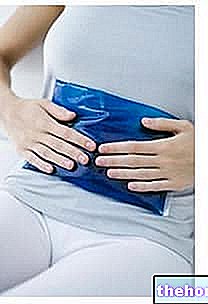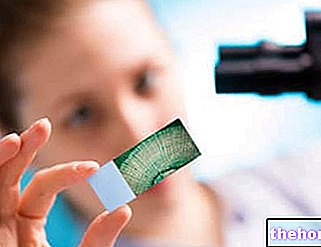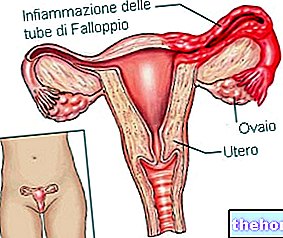Inflammation of the fallopian tubes
It defines itselfsalpingitis any generic inflammatory process affecting the fallopian tubes (or salpingi); when the inflammation extends to the ovaries we speak, more correctly, of adnexitis. There are several sub-categories of salpingitis but, generally, they are all caused by bacteria that lurk in the uterus, passing through the vagina: in particular, the germs that trigger the morbid process are staphylococci, streptococci, tuberculous bacilli and gonococcus.
Classification
Salpingitis are classified into acute and chronic inflammation: acute ones can be simple or purulent, while chronic salpingitis includes atrophic, hypertrophic, nonspecific granulomatous and nodosa isthmic salpingitis.

Acute salpingitis of a simple type (also called "catarrhal") cause a modification of the structure of the tubes, which appear soft, elastic and of a pasty consistency. Acute purulent salpingitis, on the other hand, causes an enlargement of the tubes, which increases as one approaches the ampullary area (the area where fertilization takes place). When the volume of the tube increases uniformly, it is called chronic hypertrophic salpingitis; if the tube appears stiff and thin, it is probably chronic atrophic salpingitis.
Particular attention must be paid to nodular isthmic salpingitis: it is estimated that 20% of tubal occlusions of the intramural tract are caused by this particular salpingitis, often associated with infertility.
Symptoms
For further information: Salpingitis Symptoms
In general, acute salpingitis occurs in the immediate post-menstrual period, with pain (in the lower abdomen) which tends to progressively increase. The pains are often associated with nausea and vomiting (particularly when salpingitis is caused by microorganisms pathogens), fever, vaginal discharge accompanied by itching, and irregular and unexpected menstrual bleeding.
Although abdominal pain is only felt on one side, it does not mean that only one tube is involved, as both salpingi can be compromised by infection.
In severe cases, salpingitis could develop into peritonitis.
Acute salpingitis, if not treated appropriately, could become chronic (chronic salpingitis): adhesions and scars may form in the tubes, associated with menstrual irregularities, pain and infertility. Contrary to what one might think, the chronic form of salpingitis is the most dangerous: it is true that it is one of the main causes that procure sterility, since the permanent alteration of the fallopian tubes could prevent fertilization.
The symptoms deriving from salpingitis can also have repercussions during intercourse, causing pain and discomfort in the sexual act due to the adhesions that are established between the structures near the tubes and the tubes themselves.
Causes of salpingitis
Voluntary abortion and puerperal sepsis could favor the spread of germs from the vagina to the cervix and fallopian tubes, causing acute, very painful salpingitis. Even the insertion of objects inside the vaginal cavity could cause salpingitis: in fact, it has been shown that the habit of not changing the internal tampon often - used during menstruation - as well as the use of the contraceptive coil, could favor the entry of bacteria and procure infections. The tuberculous bacilli mentioned above tend to spread through the blood, following urinary or pulmonary infections: tuberculous sepsis is also reflected in the tubes and ovary, creating salpingitis.
Diagnosis and therapy
Salpingitis, therefore, should not be underestimated: a timely gynecological intervention can certainly decrease the consequences. The diagnosis is carried out through blood tests, pelvic ultrasound, tissue sampling at the level of the cervix and biopsy of vaginal tissue for the recognition of the beating that caused salpingitis. In severe cases, the patient undergoes laparoscopy for a thorough abdominal diagnosis.
Treatments must be directed against the bacteria that first caused the infection; generally, the doctor prescribes antibiotic therapy for the partner as well, since salpingitis is one of the sexually transmitted diseases.
If the antibiotic therapy does not report positive results, the patient will have to undergo surgery: following the healing of the salpingitis, the re-establishment of the functionality of the ovary is guaranteed.
For further information: Medicines for the Treatment of Salpingitis "
Summary
Pathology
Salpingitis
Description
Inflammatory process that affects the fallopian tubes and can also extend to the ovaries (adnexitis)
Main causes
Staphylococci, streptococci, tuberculous bacilli and gonococcus
Secondary causes
Voluntary abortion, puerperal sepsis, insertion of objects into the vagina
Classification
Acute salpingitis:
- Simple (catarrhal) salpingitis
- Purulent salpingitis
Chronic salpingitis:
- Chronic hypertrophic salpingitis
- Chronic atrophic salpingitis
- Chronic nonspecific granulomatous salpingitis
- Chronic isthmic nodular salpingitis
Infertility, sterility
Acute abdominal pain similar to peritonitis, nausea, vomiting, fever, unexpected vaginal bleeding, pelvic itching, pain during intercourse
Blood analysis, pelvic ultrasound, cervical tissue sampling, vaginal tissue biopsy (to recognize the bacteria that caused salpingitis), laparoscopy (in severe cases)
Antibiotics, surgery




























